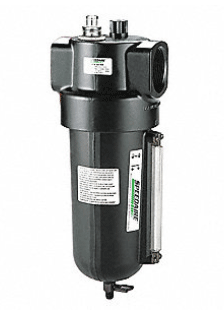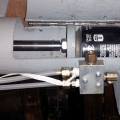Hey! This site is reader-supported and we earn commissions if you purchase products from retailers after clicking on a link from our site.
How many drips per minute for air line lubricators? I recently received that question from Anna, who works in a battery plant somewhere in the U.S. I thought that if she’s asking, others will want to know too. Here is the information about the drips per minute for an air line lubricator.
“I am the PM Coordinator at a battery plant – we have our equipment operators perform most basic pm’s, such as; draining air line separators, filling air line lubricators, greasing zerk fittings, lubing chains and more. We have been going thru a lot of airline lubricators – everyone messing with the adjustment caps, breaking them off, and of course touching the units with acid soaked gloves.
I have looked all over – even in the equipment manuals, and cannot figure out approximately “how many drops per minute should the air line lubricators be set at?” I understand that each piece of equipment is different and therefore should have different drop rates, however, I cannot find any recommendations anywhere.
Any help here would be greatly appreciated. Thanks, Anna”
_________________
Anna, thanks much for the question. This is info many folks would like, I expect.
You are right. It is difficult to provide an absolute drops-per-minute figure for the oiling rate of a lubricator when every application is different. Things that will affect the lubricating oil quantity are:
- the distance from the lubricator to the tool
- the volume of air the tool uses
- the age of the tool may have a bearing
- how big are the drops the lubricator disperses
- the cycle rate of the air cylinder if that is what’s being lubricated
I can tell you that in most cases people over lubricate, rather than under lubricate their air devices.
How To Adjust The Drips Per Minute

On the top of the lubricator there will be a raised section into the top of which is usually a slotted screw.
Turning that screw adjusts the flow of lubricant into the air line passing through the head of the lubricator.
Look closely at the adjustment screw. It should show you a direction of turn, and then some indication as to which way to turn to increase the oil flow. Usually a + (plus) sign indicates the direction to increase the drips per minute, or to lessen the drips per minute the direction of turn is usually indicated by a – (minus) sign).
Not Too Much Oil Please
A mentor of mine told me that most of the time 2-3 drops of lube oil per minute will provide ample lube for almost any application, and you could probably get away with 1 drop per minute for most air tool and air cylinder applications.
Once you start lubricating a tool or cylinder, you cannot stop as the new lube oil being introduced to the tool or circuit washes out any factory lube that might have come with the component.
If you ever stop lubricating that device, the oil/water/sludge slurry that is always moving through most air lines will dry out between uses of the air component, and you end up with tools that don’t run, valves that stick etc.
Reader Jim G. comments: Anna: Most industrial applications only need a few drops every day.
My experience is once a week you should see some lowering movement in the oil level. (in the lubricator bowl)
Adjust the oil drip and fill the lubricator based on this weekly total movement.
If the device being lubricated seems to need more oil, just give the oiler adjustment screw a 1/4 turn, a very small amount, and try to adjust once weekly to the correct amount that the equipment seems to run on best.


